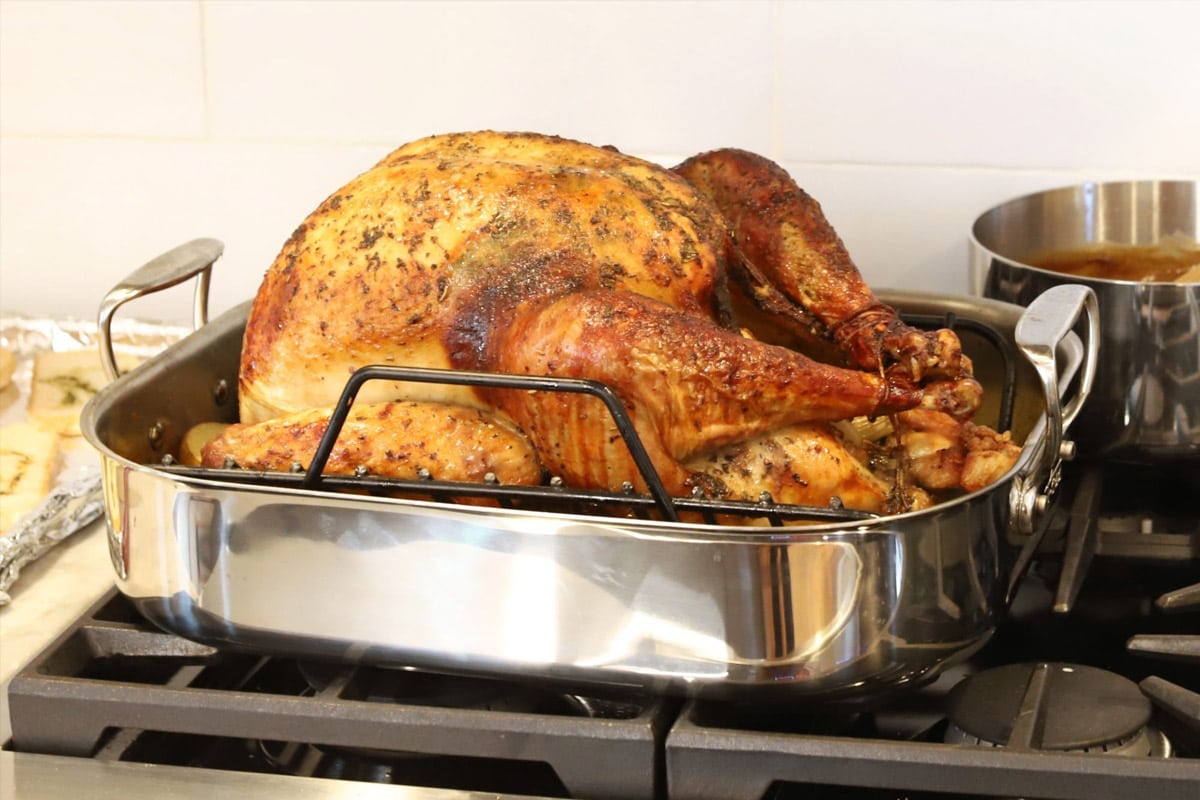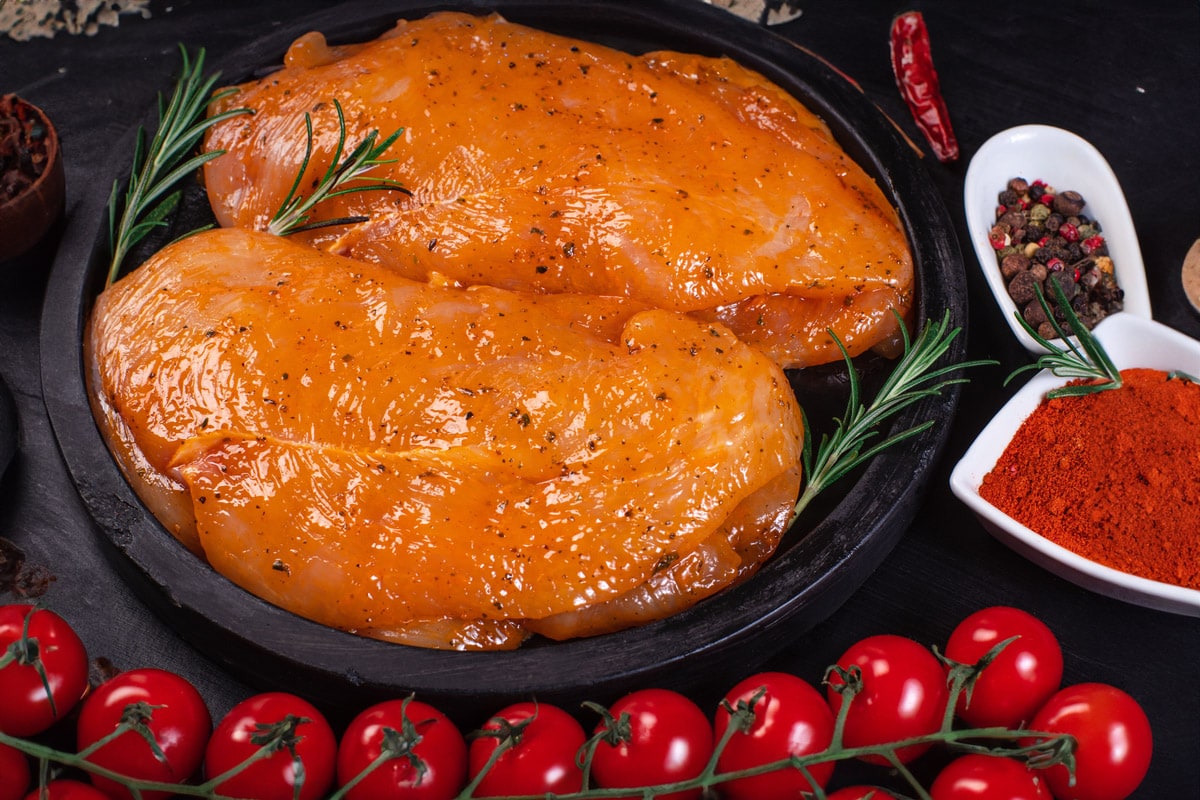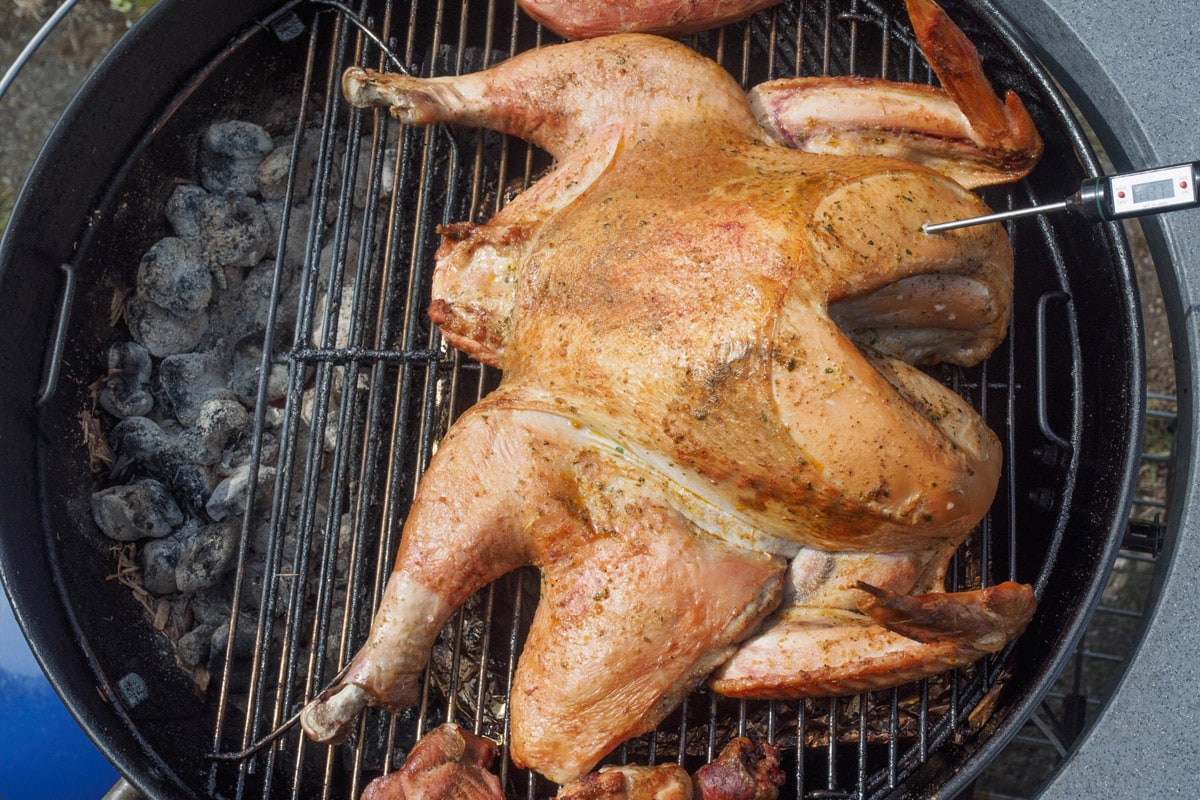Are you tired of the same old turkey recipe every year? Or maybe you don’t have access to an oven for your holiday feast? Fear not, because cooking a turkey without an oven is easier than you might think! Let’s dive into what are the best ways to cook turkey when you don’t have an oven near you.

In this article, we’ll take you on a delightful journey of Thanksgiving cooking turkey using unconventional culinary approaches. Prepare to captivate your guests with a meal that is both distinctive and bursting with exquisite flavors.
Before embarking on our culinary expedition, it is vital to grasp the fundamentals of turkey cooking. Understanding these essentials will lay a solid foundation for your culinary innovations.
From selecting the perfect turkey to ensuring its delectable doneness, a few key insights will guarantee a flawless outcome for your Thanksgiving centerpiece.
Rest assured, we will guide you through each crucial detail and present you with comprehensive, step-by-step instructions for crafting a magnificent turkey without relying on the traditional oven.
So, without further ado, let us dive into the realm of alternative cooking methods and embark on a culinary adventure that will transform this year’s holiday feast into an unforgettable experience!
Article Highlights
- Cooking a turkey without an oven is easier than you might think.
- Understanding the basics of turkey cooking is crucial before trying alternative methods.
- With the right preparation and instructions, you can cook a delicious turkey using alternative cooking methods.
Understanding the Basics
Ah, the glorious turkey, a delightful and versatile protein that sets the stage for an unforgettable Thanksgiving cooking turkey experience. Its culinary possibilities know no bounds, even in the absence of an oven. Fear not, for I assure you that a delicious turkey feast can still grace your table!
There are several options to choose from, including grilling, smoking, and slow cooking.
Each method has its own unique advantages and disadvantages, so it’s important to choose the one that will work best for you.
Once you have decided on a cooking method, you will need to prepare your turkey. This includes cleaning and seasoning the bird, as well as deciding on any additional ingredients or flavors you want to add.
It’s important to note that cooking a turkey without an oven can take longer than traditional oven cooking. This means you will need to plan ahead and allow plenty of time for your turkey to cook.
Finally, it’s important to remember that food safety is always a top priority. Make sure to cook your turkey to the appropriate internal temperature, and always use a meat thermometer to ensure that it is fully cooked.
Armed with these essential foundations, you now stand ready to embark on your Thanksgiving cooking turkey adventure. So don your apron, gather your tools, and let the magic of culinary exploration unfold!
Choosing the Right Turkey
You might be thinking, “What’s the big deal? A turkey is a turkey, right?” Wrong! Choosing the right turkey can make all the difference in how your dish turns out.
Here are a few things to keep in mind when selecting your turkey:
- Size matters: Make sure to choose a turkey that will fit in your cooking vessel. If you’re using a slow cooker, for example, you’ll need a smaller bird. If you’re using a roasting pan, you can go bigger.
- Fresh vs. frozen: Fresh turkeys are great, but they can be harder to find and more expensive. Frozen turkeys are more widely available and often more affordable. Just make sure to give yourself enough time to thaw the turkey before cooking.
- Organic vs. conventional: Organic turkeys are raised without antibiotics or hormones, and are fed organic feed. Conventional turkeys, on the other hand, may have been given antibiotics and hormones. The choice is up to you, but keep in mind that organic turkeys can be more expensive.
- Heritage vs. standard: Heritage turkeys are older breeds that have been raised for generations. They tend to be more flavorful and have a firmer texture than standard turkeys. Again, the choice is up to you, but keep in mind that heritage turkeys can be more expensive.
No matter what type of turkey you choose, make sure to handle it safely and cook it to the proper temperature.
And remember, the most important thing is to have fun and enjoy the process!
Preparation Before Cooking

Before you start cooking your turkey without an oven, there are a few things you need to do to ensure that your turkey is safe and delicious. Here are some essential steps to follow:
Thawing the Turkey
If your turkey is frozen, you need to thaw it before cooking. There are two safe ways to thaw a turkey: in the refrigerator or in cold water.
To thaw in the refrigerator, place the turkey in a large dish or tray and put it in the fridge. Allow 24 hours for every 4-5 pounds of turkey.
For example, a 12-pound turkey will take 3-4 days to thaw in the refrigerator.
To thaw in cold water, place the turkey in a leak-proof bag and submerge it in cold water.
Change the water every 30 minutes and allow 30 minutes per pound of turkey. For example, a 12-pound turkey will take 6 hours to thaw in cold water.
Seasoning the Turkey
Seasoning your turkey is key to making it taste delicious. Here are some tips for seasoning your turkey:
- Rub the turkey with olive oil or melted butter to help it brown and stay moist.
- Use a dry rub or seasoning blend to add flavor. You can buy pre-made blends or make your own using herbs and spices like garlic, thyme, and paprika.
- Stuff the turkey with aromatics like onions, garlic, and herbs to infuse it with flavor from the inside out.
Quick Note: Remember to wash your hands and any utensils or surfaces that come into contact with the raw turkey to prevent cross-contamination.
Now that you’ve prepared your turkey, it’s time to start cooking!
Alternative Cooking Methods

If you don’t have an oven or simply want to try a different cooking method, there are several ways to cook a turkey. Here are my favorites:
Using a Slow Cooker
A slow cooker is a great option for cooking a turkey. It’s easy to use and requires minimal effort. Simply place the turkey in the slow cooker, add your favorite seasonings, and let it cook for several hours.
The result is a juicy and flavorful turkey that’s sure to impress your guests.
Using a Grill
Grilling a turkey is a great way to add a smoky flavor to your bird. To grill a turkey, you’ll need a grill that’s large enough to accommodate the bird.
Start by seasoning the turkey and then placing it on the grill. Cook the turkey over indirect heat for several hours, turning occasionally, until it’s cooked through.
Using a Smoker
If you want to add even more flavor to your turkey, try smoking it. A smoker will infuse your bird with a delicious smoky flavor that’s hard to resist.
To smoke a turkey, you’ll need a smoker and some wood chips.
Simply season the turkey, place it in the smoker, and let it cook for several hours.
Using a Stovetop
Believe it or not, you can cook a turkey on the stovetop. This method is ideal if you don’t have an oven or if you’re short on time.
To cook a turkey on the stovetop, you’ll need a large pot and a rack to keep the turkey off the bottom of the pot.
Season the turkey, place it on the rack, and add enough liquid to cover the bottom of the pot. Let the turkey cook on low heat for several hours, turning occasionally, until it’s cooked through.
No matter which alternative cooking method you choose, be sure to follow food safety guidelines and use a meat thermometer to ensure that your turkey is cooked to a safe temperature.
Checking the Turkey’s Doneness
Now that you’ve cooked your turkey without an oven, it’s time to check if it’s done. But how do you know if it’s cooked to perfection? Don’t worry, I’ve got you covered!
First, you need to check the internal temperature of the turkey. Use a meat thermometer to make sure the thickest part of the turkey reaches a temperature of 165°F (75°C).
If you don’t have a meat thermometer, you can check the doneness by piercing the turkey with a fork. The juices should run clear, and the meat should not be pink.
Another way to check if the turkey is done is by looking at the color of the meat. The meat should be white and not pink. Also, the meat should be easy to pull away from the bones.
If it’s still tough, it needs more time in the oven.
Remember to let the turkey rest for at least 15 minutes before carving it. This allows the juices to redistribute, making the meat more tender and juicy.
Resting and Carving
Once your turkey is cooked, it’s important to let it rest for at least 20 minutes before carving. This allows the juices to redistribute throughout the meat, making it tender and juicy.
To rest the turkey, remove it from the cooking vessel and place it on a large cutting board.
Cover it loosely with foil to keep it warm. Use this time to prepare any side dishes or gravy.
When the turkey has rested, it’s time to carve it. Here’s how to do it:
- Remove the legs: Cut through the skin between the leg and the body, then pull the leg away from the body until the joint pops. Cut through the joint to remove the leg. Repeat on the other side.
- Remove the wings: Pull the wings away from the body until the joint pops. Cut through the joint to remove the wing. Repeat on the other side.
- Carve the breast: Starting at the top of the breast, cut thin slices against the grain. Continue until you reach the bottom of the breast, then repeat on the other side.
- Remove the thighs: Cut along the bone to remove the thigh meat. Repeat on the other side.
- Slice the drumsticks: Cut through the skin and meat around the drumstick bone, then twist and pull the bone out. Slice the meat and serve.
Remember to use a sharp knife and to cut against the grain for the most tender meat. And don’t forget to save the leftover bones and scraps for making turkey stock!
Safety Tips
When it comes to cooking turkey without an oven, safety should always be your top priority. Here are a few tips to keep in mind:
- Make sure your turkey is completely thawed before cooking. A partially frozen turkey can cause uneven cooking and potentially harmful bacteria growth.
- Always wash your hands and any utensils or surfaces that come into contact with raw turkey to prevent cross-contamination.
- Use a meat thermometer to ensure your turkey reaches an internal temperature of 165°F (75°C) before serving. This will kill any harmful bacteria and ensure your turkey is safe to eat.
- If you’re using a fryer or other cooking equipment, make sure to follow the manufacturer’s instructions and never leave it unattended.
- Keep a fire extinguisher nearby in case of any accidents.
By following these safety tips, you can ensure that your turkey is not only delicious but also safe to eat. Happy cooking!
🤔 Answering Your Questions:
What are the best alternative cooking methods for cooking a turkey without an oven?
The best alternative cooking methods for turkey without an oven include grilling, smoking, and slow cooking. Each method offers its own unique flavors and textures.
How do I choose the most suitable alternative cooking method for my turkey?
Consider factors such as available equipment, desired flavors, and personal preferences. Grilling is great for a smoky and charred taste, smoking imparts a rich and robust flavor, while slow cooking yields tender and juicy results.
What preparations are necessary before cooking a turkey without an oven?
Preparations typically involve cleaning and seasoning the turkey. Ensure it is properly thawed, remove giblets, rinse it thoroughly, and pat it dry. Season with desired herbs, spices, or marinades to enhance the flavor.
What safety precautions should I take when cooking a turkey without an oven?
Food safety is crucial. Ensure the turkey reaches a safe internal temperature of 165°F (74°C) to eliminate any potential bacteria.
Bottom Line
Well, there you have it, my dear friends! Cooking a turkey without an oven is not as arduous as one might imagine. With a sprinkle of imagination and a handful of basic utensils, you’ll be able to relish a mouthwatering, succulent turkey in a jiffy.
We hope this article has given you some inspiration and ideas for your next turkey dinner. Whether you’re cooking on a stovetop, grill, or slow cooker, there are plenty of ways to get that perfect turkey.
Remember, the key to a great turkey is to keep it moist and flavorful. Don’t be afraid to experiment with different seasonings and cooking methods until you find the perfect combination that works for you.
So go ahead, give it a try! Your family and friends will be impressed with your newfound turkey cooking skills. And who knows, you might even start a new Thanksgiving tradition.
Happy cooking!

Leave a Reply